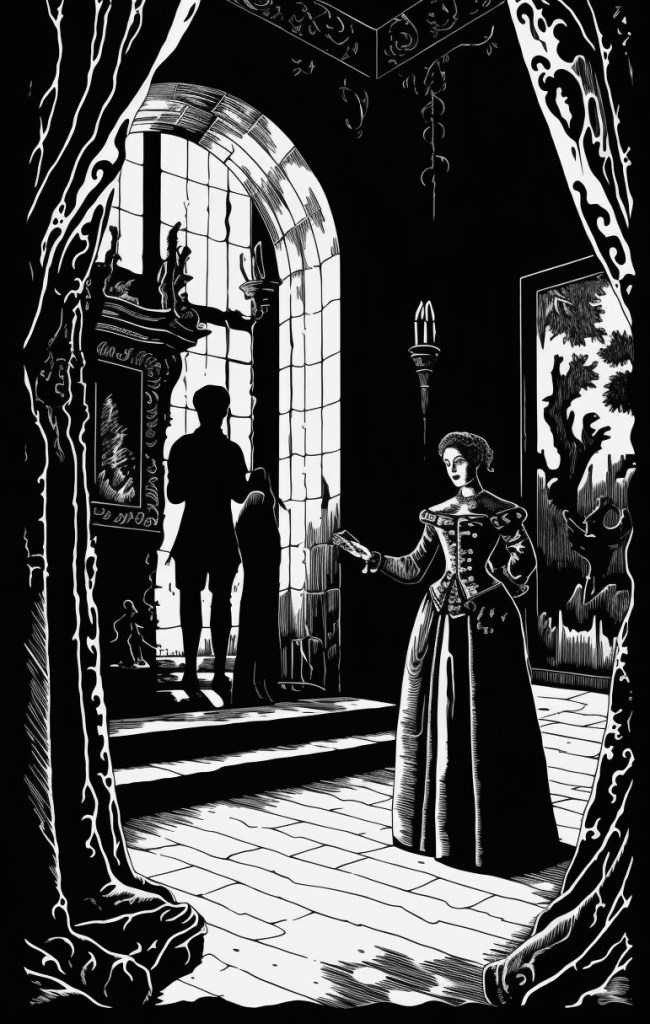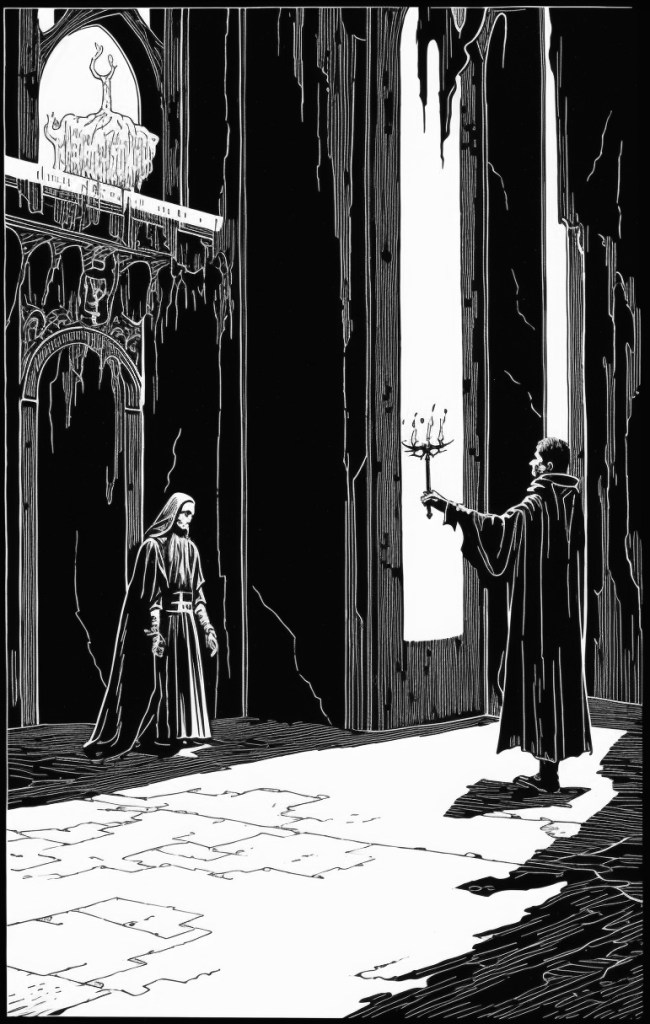Tradecraft is a mechanic peculiar to The Dee Sanction, included to lend a certain vibe and flavour to the adventures as Agents seek to overcome significant threats. It’s peculiar enough that I suspect many people don’t use it, or just use the bit that provides generic skill support for the group.
Firstly, it’s worth reading A Discovery of Tradecraft if you haven’t done so already. The article deals with Tradecraft in general, but it angles toward its value for plugging the gaps in Abilities.
What is a Mark?

I recommend thinking of a Mark as plot armour or steps toward finding a means to defeat an enemy or obstacle (in the example from A Discovery of Tradecraft, Gallowglass is not strictly an enemy, but while he distrusted Matthew for consorting with a witch, he wasn’t going to be any help).
It often happens in books or TV that a series has an enemy that appears and faces off against the good guys but isn’t defeated in one encounter. Imagine a series where a vampire is the enemy.
You need to:
- Rob the creature of the earth from its resting place [Magic],
- Discover the cult protecting the creature [Access], and
- Have possession of a special mirror to reveal it isn’t human [Kit].
You need to have all of these things sorted BEFORE you can fight and destroy it, and each Mark is bought by expending that type of Tradecraft.
Wrong Again
A common question is what happens if you start a mission, but make the wrong choice of Tradecraft. And how do you know what the right one is, anyway?

Well, that all becomes part of the investigation/adventure, as the Agents uncover the vulnerability, assistance, and/or means of identification to handle a threat. These don’t all come at once.
Effectively, realising that the vampire might have a vulnerability, as explained above, means that for Session Two, the group chooses Magic and then depletes the Mark to acquire the specific knowledge during the course of play.
What about session one? What happens when you don’t understand the true nature of the threat?
Well, most of the time, you have to assess the proposition and hope you choose well. But, you cannot be certain that you will choose the perfect Mark. It’s the responsibility of the Game Moderator to play the part of the “handler” for the briefing — whether that’s Mister Garland, a minion of Walsingham’s secret service, or somebody else — offering what foresight they can in explaining the mission. There’s no imperative to state you’re up against a vampire. Or, maybe the signs point to a vampire-like creature, but the truth of it is that a Zmaj Vuk lurks behind the scenes.
A Plan of Action
But, for the moment, assume that it is a vampire, Session One might just turn up a plan of action without real progress being made toward defeating the creature. If you choose Kit for Session Two, you might acquire the mirror. Access? You work out what cult is assisting the vampire, and find a way to neutralize their involvement.
In the end, it will take four adventures to resolve the story, but you might have other adventures in between. Imagine that this is like TV, and there are eight episodes, perhaps, but only four of them feature the vampire. The rest might reference it, but it doesn’t make an appearance.
That said, even if the vampire doesn’t make an appearance, you can still strike off the Marks if the events in those adventures allow. It’s a narrative flow that both the table and the GM should support. It’s meant to be a way to battle an enemy that cannot be laid low by force alone but by the clever accrual of items and knowledge defined as a mechanic within the game.